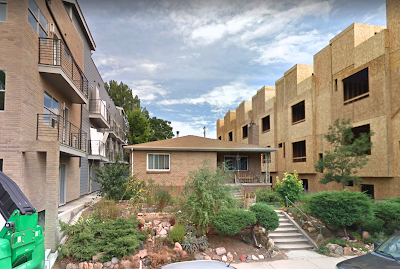There are some substantial financial incentives available to owners of historic properties. The following has been compiled by Meg Dunn, taken primarily from information posted to the City's Historic Preservation department page on the City website.
FOUR TYPES OF
FINANCIAL INCENTIVES FOR OLDER HOMES
Design Assistance
Program (For property owners of any house in Old Town.)
The Design Assistance Program helps property
owners minimize the impacts of additions, alterations, and new construction on
neighbors and on the overall historic character of Fort Collins. The City program provides a grant of up to $2,000/per year to pay for design assistance for projects that impact a building’s exterior. The
program enables and encourages owners to utilize the expertise of qualified
consultants (architects, builders, etc. with documented experience in compatible historic design) to help prepare plans for new
construction, alterations, and project planning.
Landmark
Rehabilitation 0% Interest Loans (For locally landmarked properties and properties that contribute to a historic district.)
The City will loan a property owner a zero interest loan in the maximum amount of $7,500 per project per property in a single year. There is no minimum loan amount nor an application fee but the property owner must match the loan with a minimum cash match of 50% of the total project cost, (i.e. project must cost at least $15,000 to receive the full $7,500 loan). The goal of the loan program is to improve the quality and integrity of designated historic resources in Fort Collins. Since historic
buildings represent a source of pride for the community, a high standard of
rehabilitation is expected of these structures. Every project is reviewed using
the U.S. Secretary of the Interior's Standards for Rehabilitation to ensure
high quality and workmanship. Ordinary maintenance items, such as painting or
replacement of a roof with asphalt shingles, are typically not funded through
this program. The program provides 0% interest loan funds to residential and
non-residential historic properties. Loan funds are repaid to the City only
through the sale or transfer of the property. Funds returned to the City are
recycled back into the program, providing an ongoing source of dollars for
additional projects.
Learn more at: https://www.fcgov.com/historicpreservation/landmark-rehabilitation.php
Colorado State Tax
Credits (For locally landmarked or State or National Register
properties or properties that contribute to a historic district.)
The State has a variety of dollar-for-dollar state income
tax credits for work on both the interior and exterior of designated resources.
Any unused credit may be carried forward for ten years.
· A 20% state
tax credit for the rehabilitation of historic, owner-occupied residences
· A 20% -30%
state tax credit for the rehabilitation of historic buildings used for
income-producing purposes.
Learn more at: http://legacy.historycolorado.org/oahp/preservation-tax-credits
Federal Tax Credits (For
locally landmarked or State or National Register commercial properties or commercial properties that contribute to a historic district.) Federal tax credits can be used in addition to state tax credits for eligible properties.
· A 10% federal tax credit for the rehabilitation of older, non-historic commercial properties
· A 20% federal tax credit for the rehabilitation of certified historic buildings used for income-producing purposes
-->
Learn more at: https://www.nps.gov/tps/tax-incentives.htm





